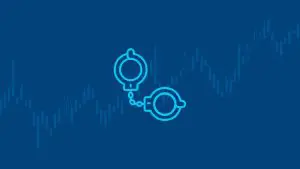Proponents of prediction markets often highlight markets’ ability to reward unique information. Traders have an edge when they know something that the rest of the market doesn’t. They can lock in better prices before others become privy to market-moving news.
However, that also sounds like insider trading. Inside traders withhold information from the market to take advantage of it. Trading with non-public information is forbidden on the stock market, because public companies must be transparent about their performance.
However, insider trading is improper because of the insider’s relationship to the company. No one outside of the insider’s bubble has a chance to know the information the insider has.
In contrast, prediction markets let anyone use their unique knowledge to trade at the prices they believe the contracts should be valued at. That’s why price movements that result from new information are different from price movements from manipulation.
John Birge, a professor and economist at the University of Chicago, has studied prediction markets and their traders. He also clarifies the difference between rewarding traders who have new information and market manipulators gaming the system.
Market Manipulation in Real Life
Understanding how market manipulation works requires clearing up a common misconception: people with novel information don’t always share it right away.
“There are a lot of people that think, well, even if someone has that extra bit of information, eventually they have to release it so that they can profit from that information,” Dr. Birge said. “But the thing is that the people that do have that extra information, they can use it strategically at different points in time, such that they can actually keep the market thinking that it should be A, when in fact, it should be B.”
Market manipulation schemes often follow a certain price pattern. The contract price will move steadily in one direction, then suddenly spike in the opposite direction without any new information coming to light. Typically, relevant information comes out later, retroactively explaining the earlier spike.
Legitimatly New Information vs. Market Manipulation
The difference between price movements rewarding traders for unique information and market manipulation is whether a price change is caused by shifting beliefs or brute force.
“If there’s a high rate of new information entering into a market, then we should see that kind of volatility,” Dr. Birge said. “The changes in prices that come from market manipulation would tend to be moving in one direction then suddenly move in another direction, as opposed to moving back and forth or somewhat randomly.”
For example, Polymarket’s election winner market showed brief volatility after news of a second assassination attempt on Donald Trump broke. Starting at about 1:30 p.m. ET on Sept. 15, the election winner market showed small random spikes before smoothing back into a settled price a few hours later. That random price movement was a reaction to the new information about a second attempt on Trump’s life.
In contrast, a failed attempt at market manipulation matched Dr. Birge’s description of a manipulation pattern. In a market on who would be Polymarket’s favorite to win the presidential election, a group of traders bought many Harris contracts. The price of Harris being the favorite by the end of the week spiked from 3 cents to 20 cents in minutes.
There was no campaign news or live events to explain that spike. Polymarket’s traders didn’t think the Harris contracts were worth 20 cents, so the price fell to its previous level within an hour.
In this case, the market corrected the potential market manipulation. The short-term price movement didn’t convince traders that new information suddenly made Harris’ contracts more valuable. Prediction market proponents point to the strength of the prediction market model as a robust defense against long-term price manipulation.
Understanding Price Movements Means Understanding Traders
A clear-eyed view of prediction markets must include an understanding of how information affects prices. Price movements that are tied to new public information reflect honest changes in traders’ beliefs. Price spikes with no explanation may signal manipulation attempts and warrant investigation.
Further, prediction markets are not immune from insider trading. A trader who’s savvy enough to acquire privileged information early may also be strategic enough to wait to make her trades until the prices move in her favor.
























